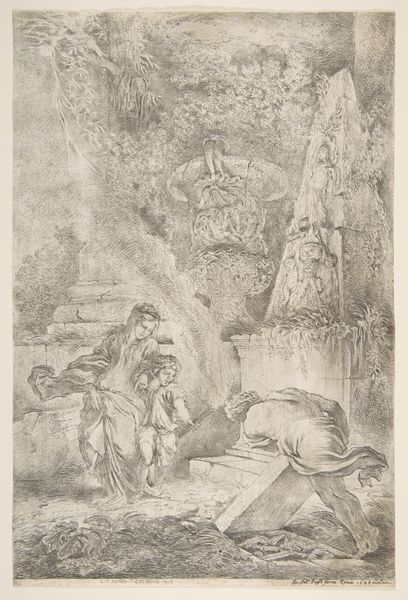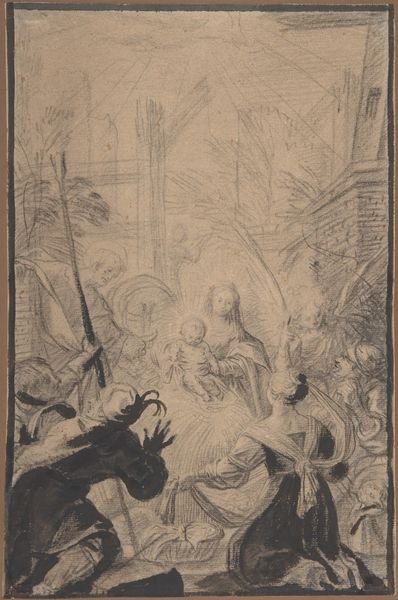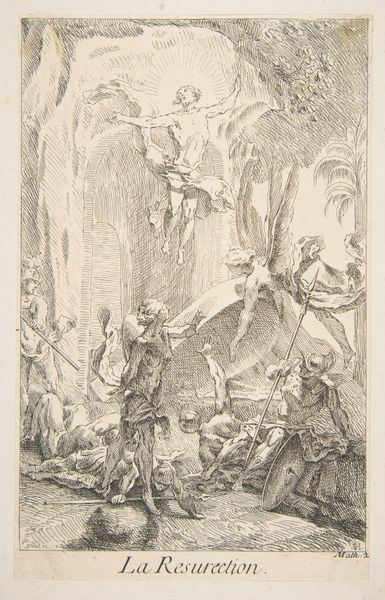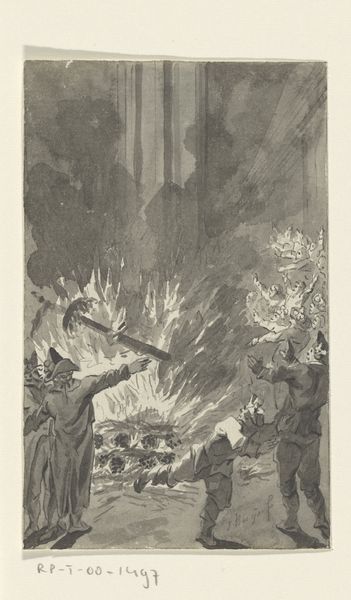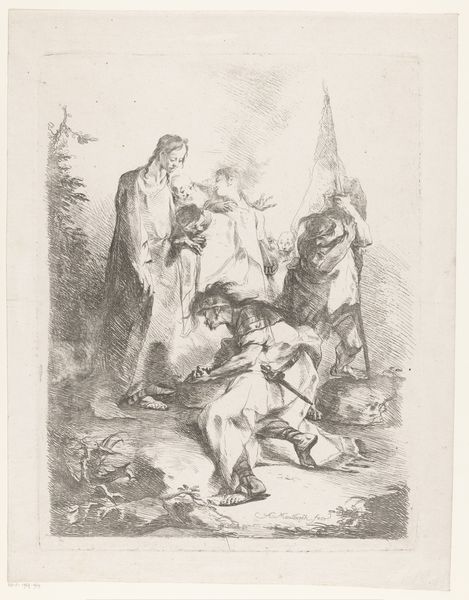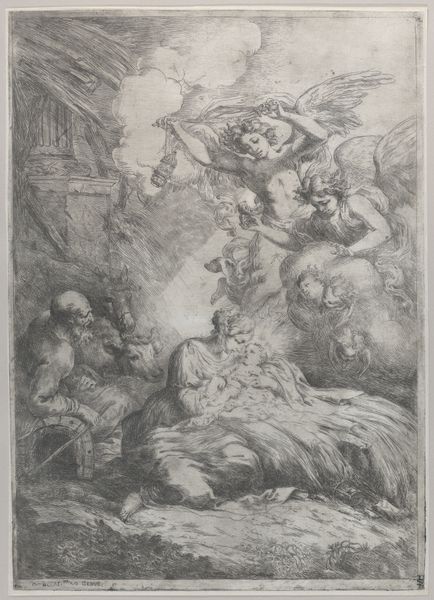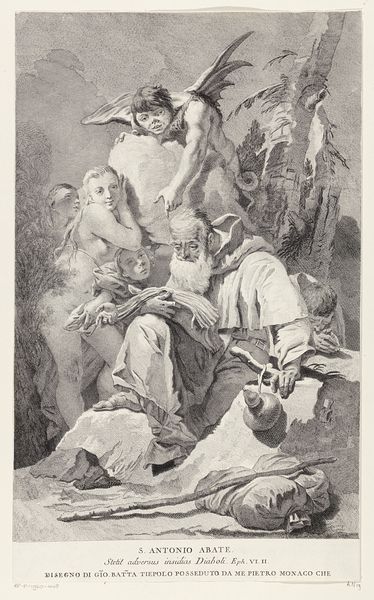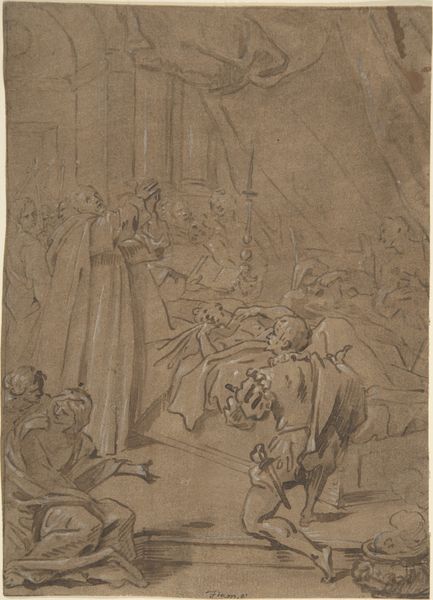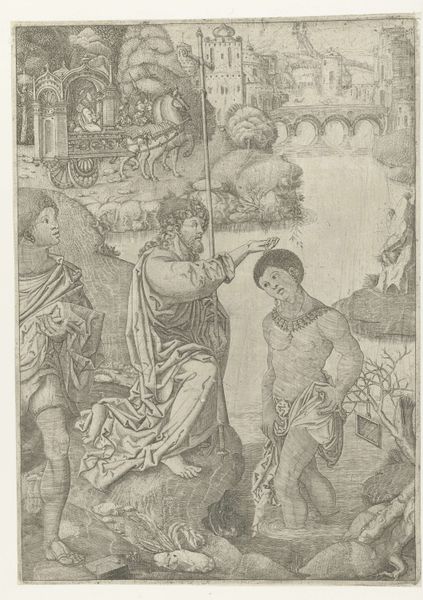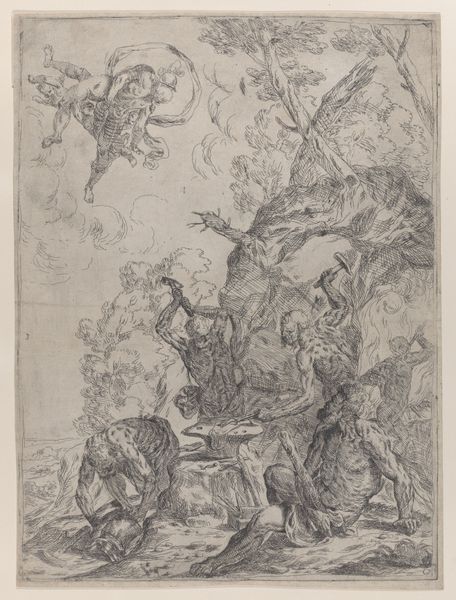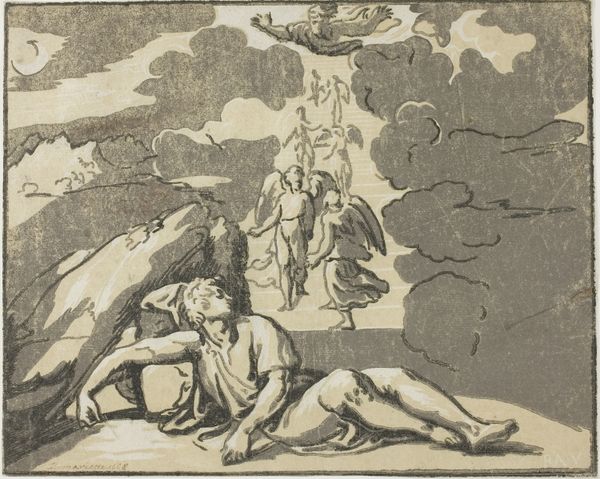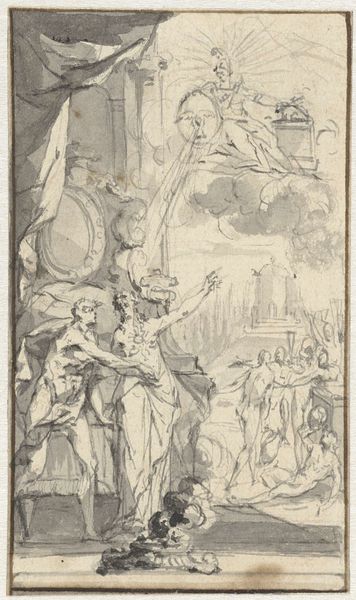
Theseus Finding His Father's Weapons 1648
0:00
0:00
print, etching
#
baroque
# print
#
etching
#
landscape
#
figuration
#
history-painting
Dimensions: 11 5/8 x 8 in. (29.53 x 20.32 cm) (plate)12 3/8 x 8 5/8 in. (31.43 x 21.91 cm) (sheet)
Copyright: Public Domain
Editor: This is "Theseus Finding His Father's Weapons" by Giovanni Benedetto Castiglione, created in 1648. It’s an etching, so it’s all in monochrome. I am struck by its storybook mood. What do you make of it? Curator: The etching teems with symbolic language! Castiglione, known as Il Grechetto, uses this historical subject to communicate broader themes. Look closely: the architectural ruins evoke a past grandeur, a lost golden age. The overgrown foliage suggests the passage of time, burying secrets. Editor: Yes, the decay is really prominent. Curator: Precisely! What is buried, yet to be revealed. The mother guiding Theseus toward his destiny represents initiation, a passing of knowledge from one generation to the next. The father, bent over, seemingly unaware, underscores the burden of legacy and the often-blind nature of tradition. See how the light illuminates the child while leaving the man in shadow? What might that suggest? Editor: Hmm, perhaps the future is brighter than the past? Curator: An astute observation! And consider the weapons themselves. Not mere objects, but symbols of power, responsibility, and the potential for both creation and destruction. Castiglione isn’t just depicting a scene; he’s presenting us with layers of meaning. What continuities might exist for today? Editor: So, it’s not just a historical scene; it’s also about universal human themes that echo through time! It definitely offers more than what meets the eye initially. Thanks for untangling those threads. Curator: Exactly. It's an image that allows one to examine the symbolic language, to reflect upon what has been buried and must be unearthed to create continuity into the future.
Comments
No comments
Be the first to comment and join the conversation on the ultimate creative platform.
